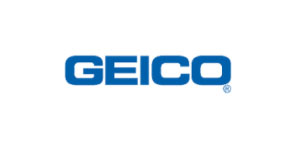Did you know that over 350,000 house fires happen every year in the U.S.? These fires cause billions in damage. The damage from fires goes beyond what you can see. It includes signs like ash, charring, melting, and heat marks on materials.
After a fire, you might see yellowed walls and floors, and furniture covered in soot. But there’s more to it. Soot, being very acidic, can damage metals and plastics it touches. It’s important to understand how fires affect properties to start the recovery and restoration.
Key Takeaways
- Annually, 350,000 house fires in the United States lead to extensive property damage.
- Fire damage symptoms include ashing, charring, melting, and heat distortion.
- Yellowed walls, distorted wood and plastics, and soot-covered furniture are common visual signs of fire damage.
- Soot’s acidic nature can corrode metals and discolor plastics.
- Recognizing fire impact involves understanding both the visible and hidden effects of fire on property.
Introduction to Fire Damage
Understanding fire damage is key for those who have gone through a fire or work in emergency response. Fire damage isn’t just about what you see right after a fire. It also means looking at the hidden effects of the fire.
Fires leave different residues based on how much oxygen they had. This affects how we clean up and restore things. Smoke damage can be either driven or free-floating, depending on how it moves and affects things around it. The kind of fire, with more or less oxygen, changes the kind of residues and how they can damage things.
Acting fast after a fire is very important. You should call your insurance and get help from experts like firefighters and adjusters quickly. They can help with the cleanup and figuring out the full damage from smoke and fire.
Fire damage has many effects on buildings, things we own, and the area around us. So, understanding it means looking at both the damage we can see and the hidden damage. We also need to think about what made the fire spread and get worse.
Knowing about the different kinds of smoke damage and how to clean up helps us recover better from fire damage.
Visual and Structural Damage from Fires
Fires leave clear signs of damage, like scorched walls and melted objects. These signs help spot where the fire hit hardest. But, the real damage might be hidden. The heat and smoke can weaken the building’s structure, making it unsafe.
Electrical systems and appliances might not work after a fire. This is a big worry when checking how a fire affected a building. Water from firefighting adds to the damage, making things even tougher to fix. Experts use special tools like HEPA vacuums and sealants to help restore buildings and their historic parts.
It’s important to know how to spot fire damage and understand the damage it causes. Things like charred surfaces and broken electrical systems show how bad the fire was. They also tell us what repairs are needed to make things safe again.
The Impact of Smoke on Buildings and Contents
Smoke is corrosive and deeply affects buildings and their contents. It goes through porous materials, leaving behind an odor and an acidic film. This can make surfaces discolor and corrode, making restoration hard.
The damage from smoke depends on the materials burned. For example, smoke from wood, plastic, or protein-based materials causes different types of damage. These require various cleaning methods. The effects can be seen in several ways:
- Discoloration: Soot and smoke stain walls, ceilings, and other surfaces, needing deep cleaning.
- Corrosion: Metal surfaces like chrome and stainless steel can rust or pit due to smoke’s acidic compounds.
- Permeation: Smoke’s smell can get into fabrics, carpets, and upholstery, needing special removal methods.
To fix smoke damage, targeted cleanup is key. Using dry cleaning sponges, strong detergents, or industrial products is crucial for removing soot and smoke from surfaces like Formica, chrome, and plaster. A detailed cleaning process is needed to fully clean affected areas.
Safety is very important during cleanup. Wearing HEPA respirators, gloves, and goggles is a must. Following OSHA’s guidelines is vital to protect those cleaning up. This ensures the safe removal of smoke residues and reduces health risks.
Knowing how smoke damage affects properties is crucial for restoration work. Whether it’s homes or businesses, a specific approach to removing smoke odors and soot is key. This helps in safely and effectively fixing damaged areas.
Internal Damage: Beyond the Surface
Fire damage inside a building can be more than just visible. It can affect the structure’s strength and safety. The heat from a fire can make materials weak or change their shape. This can be a big risk to the building’s stability.
Hidden fire damage goes beyond the fire itself. Smoke can damage HVAC and electrical systems deeply. This means thorough checks and cleaning are needed to keep things safe and working right. Fires can also release harmful toxins like asbestos or PCBs, which can be bad for health.
Smoke can make the air inside buildings unhealthy to breathe. It can get into things like furniture, carpets, and ducts. This means people may be exposed to smoke for a long time. It’s important to document all the damage and clean carefully to make places safe again after a fire.
What Does Fire Damage Look Like? (Repeated Section)
This section seems to be repeated in the outline. In a well-structured article, each section should have its own unique heading and content. Please let us know if you want this section to be changed or focused differently from Section 1. We will make sure this section covers new aspects not mentioned before.
Fire damage is more than just what you see on the surface. The heat from a fire can bend and weaken building parts, making them unsafe. Signs of this include warped wood, melted metal, and cracked concrete. Also, soot and char can make some materials unusable.
After a fire, the damage goes beyond what the flames touched. Areas not hit by the fire can have discolored walls, peeling paint, and materials that are no longer straight. This shows why understanding fire damage’s full impact is key.
Fixing fire damage means looking at both the obvious and hidden changes. This includes everything from damaged interiors to destroyed personal items. Getting experts to help is crucial to make a place safe and useful again.
In conclusion, we highlight the importance of avoiding repeated sections in articles. It’s important to focus on different topics under unique headings. This keeps the article clear and helps with SEO.
Health Risks Associated with Fire Damage
Fire damage has a big impact on health, needing quick and ongoing care. People can breathe in harmful particles after a fire, which can make breathing problems like asthma worse. There’s also a risk of poisoning from things like carbon monoxide and other dangerous chemicals made when things burn.
After a fire, mold can start to grow if water damage isn’t fixed quickly. Mold can cause allergies and breathing issues, so cleaning up fast is crucial. To avoid these problems, it’s smart to have smoke detectors, fire extinguishers, and think about sprinkler systems.
Even after the fire is out, smoke and soot can still be harmful. This means cleaning up thoroughly is a must. Knowing about the health dangers from fire damage helps people take steps to stay safe.
- Respiratory issues from particulate matter
- Potential poisoning from carbon monoxide
- Exposure to hazardous chemicals
- Mold growth due to water damage
Dealing with health risks from fires means acting fast and staying alert. Cleaning up well and taking steps to prevent fires are important. This helps lessen the health effects of fires and lowers the chance of toxic exposure.
Conclusion
Fire damage can deeply affect a building’s structure and the items inside. Right after a fire, you’ll see signs like discoloration and warping. But, the damage often goes deeper than what you can see.
Smoke spreads through walls, leaving harmful residues. Moisture from fighting the fire can cause mold and make structures unstable.
It’s key to understand all the damage to fix and restore properly. Smoke and chemical residues can harm people’s health for a long time. Fixing fire damage means dealing with both the visible and hidden issues.
Professionals need the right skills and tools for a complete cleanup and restoration. This ensures every part of the damaged area is fixed.
To overcome fire damage, a detailed cleaning and repair plan is needed. Restoring a property to its pre-fire state is crucial for the health and safety of its occupants. By addressing both the visible and hidden damage, people can feel safe and at peace again.



























